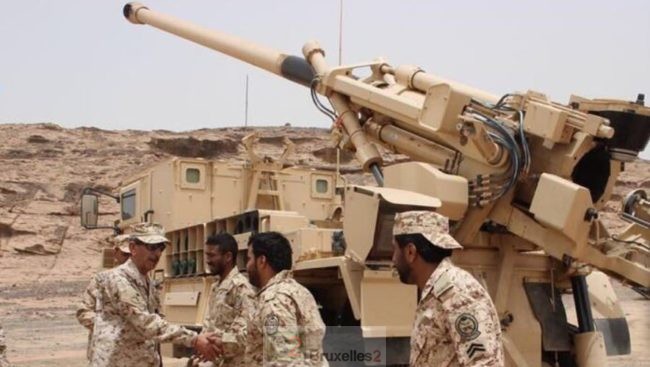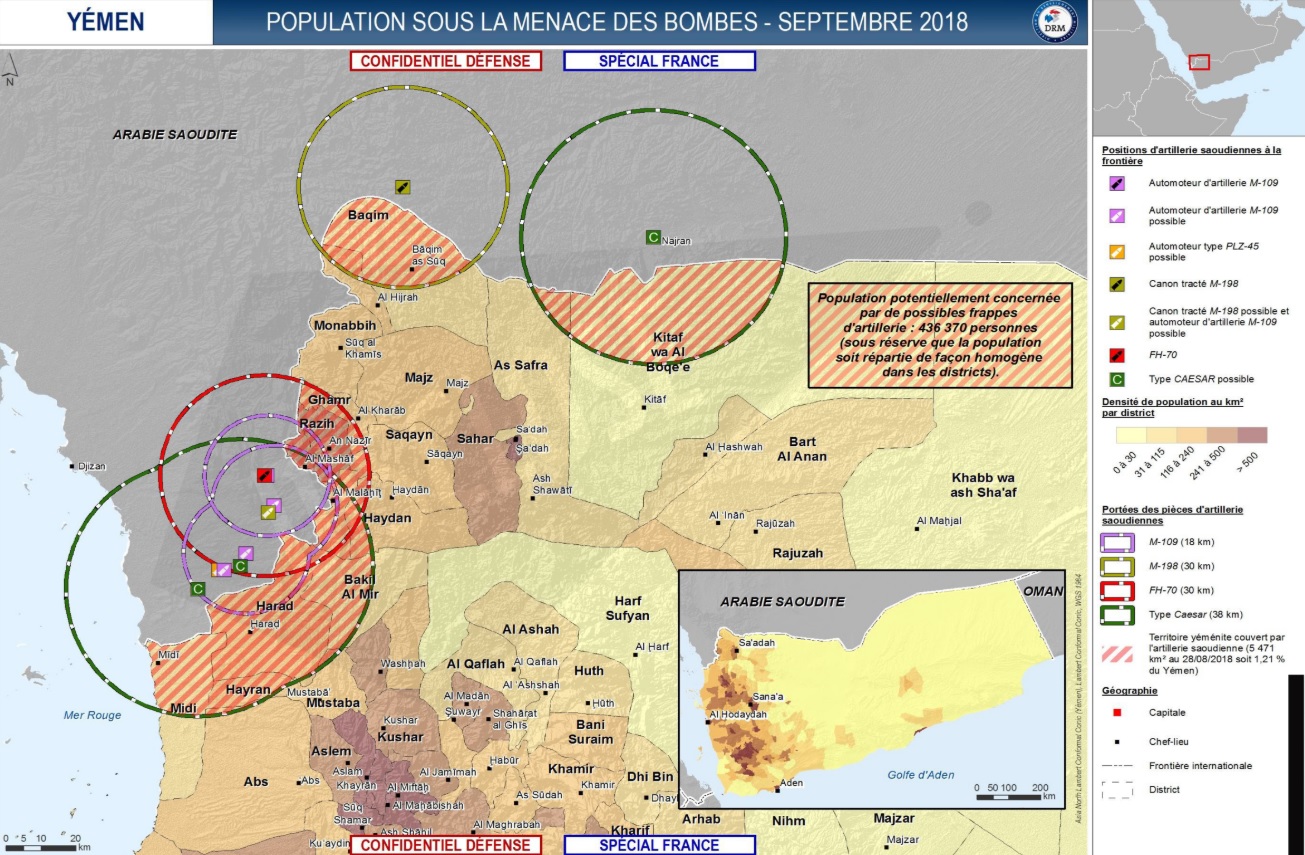Yemen: Disclose journalists demonstrate French double talk on arms sales to the coalition
(B2) The very young NGO dedicated to investigative journalism Disclose published on Monday (April 15) its first investigation into French arms sales to the coalition involved in Yemen. At the heart of this publication, a "confidential defense" note from the Directorate of Military Intelligence (DRM) which has two interests: confirming a certain double government discourse, and accrediting the operational difficulties of the Arab coalition in Yemen.

French double discourse
For NGOs, one of the challenges is to demonstrate that France delivers arms despite the risks for the populations on the ground. The leak of this note from the DRM in the Yemeni theater of operations confirms these accusations and represents an opportunity for the ten or so associations involved in opposing the French arms export policy.
Florence Parly, in flagrante delicto?
All French government rhetoric has aimed to say, since the start of the conflict in Yemen, that the arms exports to Saudi Arabia and the United Arab Emirates are granted only on a case-by-case basis, when Paris is sure of not seeing these weapons used against civilian populations. The Disclose team notes several speeches by the Minister of the Armed Forces which illustrate a certain bad faith on the part of the executive. On October 30, for example, Florence Parly declared on BFM TV: “ We have no ongoing negotiations with Saudi Arabia. A contract for major artillery pieces, the Caesar guns, was however signed the following December. Given the duration and sensitivity of such negotiations, how can we ignore it?
French weapons used in Yemen
The note from the DRM was indeed given to President Emmanuel Macron, to Minister Florence Parly, as well as to their teams. It lists precisely the positions of the various military equipment imported by the countries of the coalition, in particular the French. Among the most sensitive: Damocles laser designation pods to guide aviation fire, Mirage 2000-9 fighters, Leclerc tanks and even Caesar guns.
The Caesar at the heart of concerns
The note confirms the use of French military equipment in coalition operations, under the Saudi and Emirati flags. Weapons that could, as NGOs regularly denounce (Read: France's arms sales to Saudi Arabia illegal?), contributing to war crimes committed in Yemen. Military intelligence insists in particular on the use of Caesar guns, estimating that with their range and despite the fact that they are posted "defensively" inside Saudi territory, they threaten 436.370 Yemeni civilians. Disclose goes further by identifying several villages in which civilians were killed, and this while, despite the presence of American, British or Chinese-made guns, only French Caesars were within range.

business continues
Most of the equipment identified as at risk by the DRM was delivered well before the start of the conflict. However, Diclose reveals that sales took place afterwards, on sensitive equipment. In December 2018, Nexter signed a contract on which it remained very discreet, called "Artis", which provides for the delivery of new Caesar guns to Saudi Arabia, as well as Titus armored vehicles and 105 LG towed guns. The French government has therefore authorized arms deliveries to a country whose situation prevents it from asserting with certainty that they will not be used against civilian populations.
Europeans involved
The French are not the only Europeans concerned, even if they remain, with the Americans, the most represented on this list. The DRM note lists major equipment used in Yemen and supplied by the British (Typhoon and Tornado aircraft), by the Italians (Abu Dhabi class corvettes), by the Germans (Murayjib class corvettes, Murjan class) or the Swedes (Saab 2000 Erieye, Ghannatha class patrol boats).
An outdated coalition
The publication of this note also shows that the coalition engaged against the rebels Houthi, which France supports with these arms deliveries, fails to make decisive progress on the ground.
“Perfectible” aerial targeting
While the coalition's engagement is primarily aerial, the DRM notes that the targeting of the Royal Saudi Air Force (RSAF) is not optimal. Despite American aid in this area, forward air support operations (close air support) are recent and poorly controlled by the crews ».
Border: an “unsuitable” device
While Saudi troops began in the summer of 2018 to move from a purely defensive position on the border, to operations in the territories controlled by the Houthi, the DRM considers their device to be “ unsuitable, unresponsive and worn out against guerrillas ". Faced with improvised explosive devices and artillery fire from the insurgents, the Saudis are handicapped by the mountainous terrain, the imprecision of their shots and the mobility of the adversary. For French intelligence, the " Saudi operations are held in check ».
The wear and tear of the Emiratis on the ground
The Emiratis, the main contributors to the land component of the coalition, are suffering from the duration of the conflict. For the DRM, two factors are problematic: the human losses (between 105 and 170 killed) as well as the poor organization of rotations… which sometimes leads to deployments of up to 18 months in theater for the military. The Emiratis also have difficulties with the upkeep of their Leclerc tanks, which they are forced to bring home for maintenance.
Terrorist groups in decline
One of the main reasons for Western support for the coalition is the fight against jihadist groups, which have long been present in Yemen. This is the only front on which progress seems to have been made. " Al-Qaeda in the Arabian Peninsula (AQPA) and Daesh [...] appear weakened by ground operations carried out by security forces trained and equipped by the United Arab Emirates writes the DRM.
(Romain Mielcarek)
Lire: Disclose's full investigation and view DRM documents
Read also:
- Yemen. An arms embargo must be imposed on Saudi Arabia. Parliament drives the point home
- Arms exports. Between Paris and Berlin, more than a nuance
A number of materials used
According to the DRM, various French-designed materials are used by the coalition forces:
Some are used in Yemen: laser designation pods for Damocles combat aircraft (Thales), Cougar utility helicopters (Airbus Helicopters), al-Madinah class frigates (Naval Group), Makkah class frigates (Naval Group), Navy Panther and Dauphin (Airbus Helicopters, Mirage 2000-9 (Dassault), A330 MRTT tankers (Airbus), Leclerc tanks (Nexter), arrow shells and explosives for combat tanks (Nexter), Baynunah class corvette (CMN).
Others are at undetermined positions: AUF1 guns (Nexter), LG1 guns (Nexter), RTF1 mortars (TDA/Thales), 2R2M mortar (TDA/Thales), Milan 3 anti-tank missiles (MBDA), Black Shaheen cruise missiles (MBDA).
Finally, some equipment is not supposed to be used in Yemen, even if it can play a remote role: AMX-30 tanks (Nexter), AMX-10P tanks (Nexter), Aravis armored vehicles (Nexter), counter radars -Cobra battery (Thales/Airbus), Caesar guns (Nexter), AASM bombs (MBDA).
